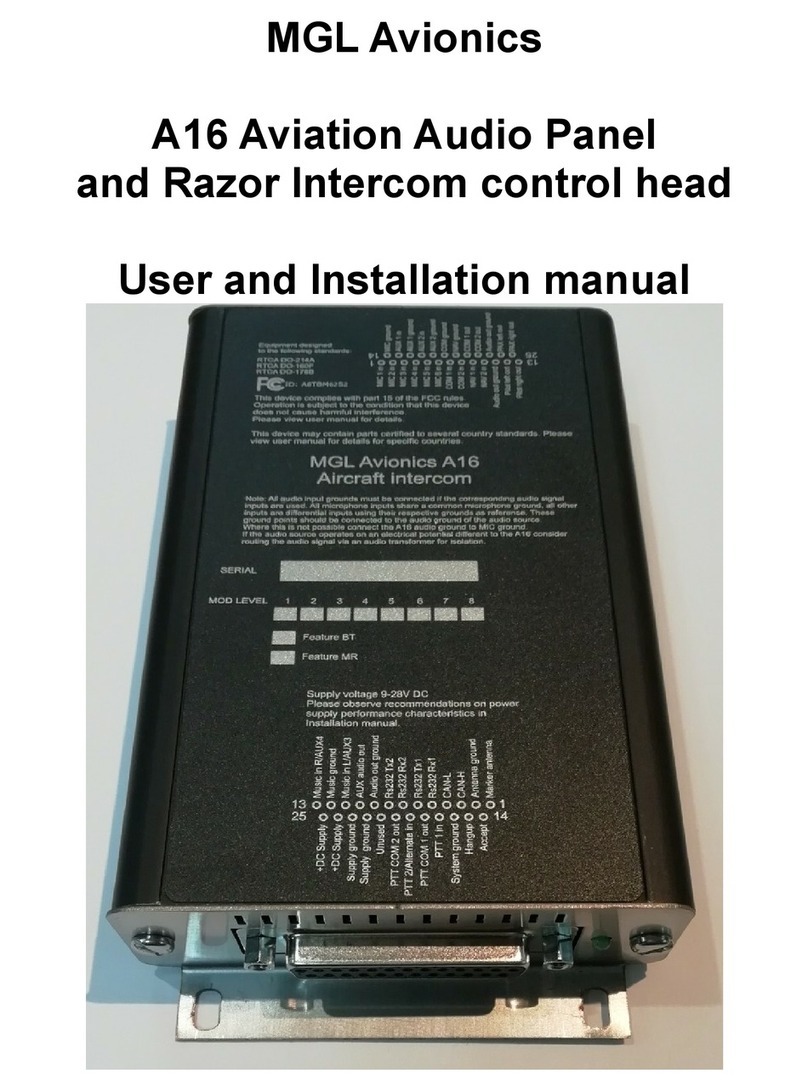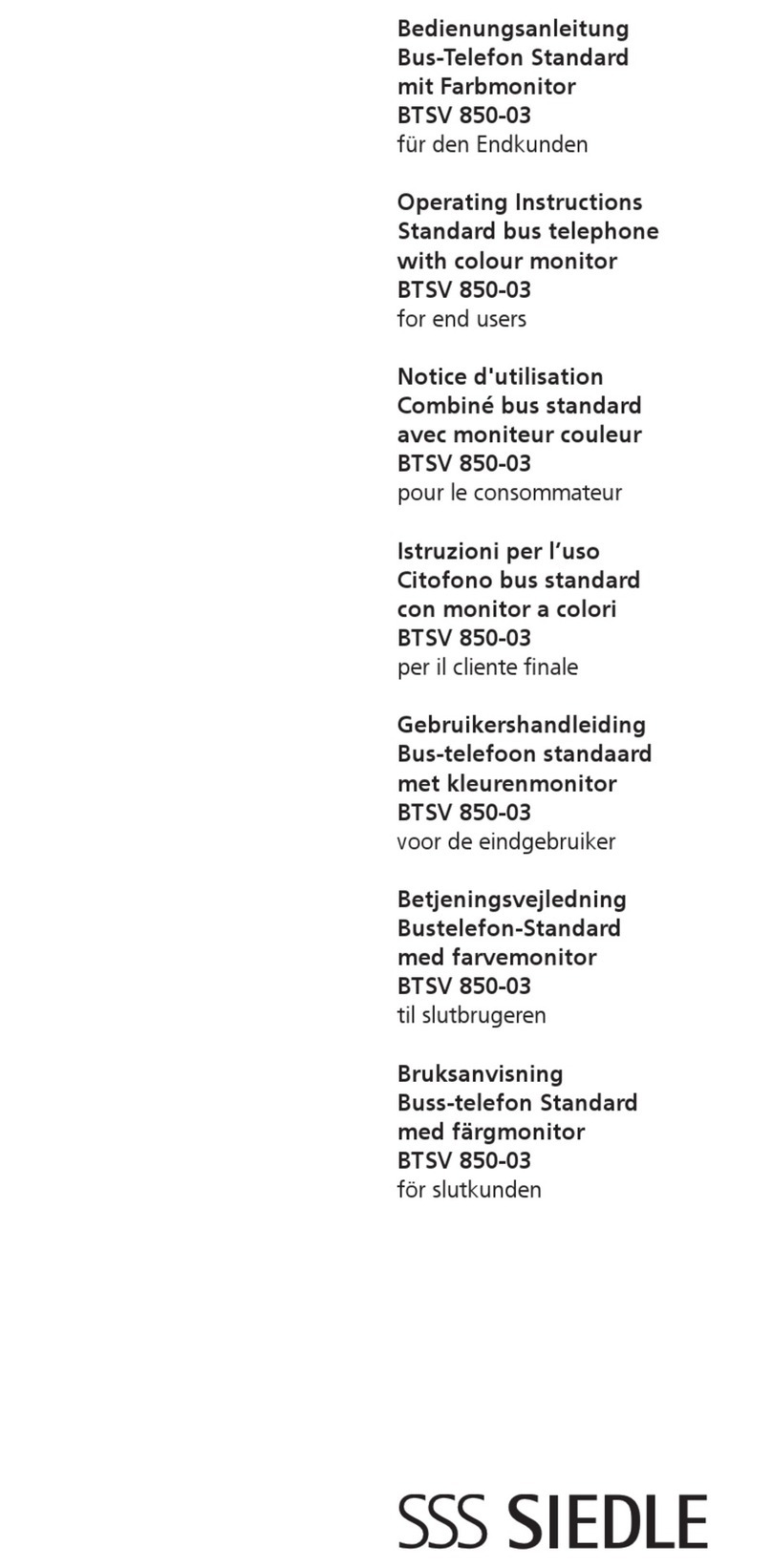
The igital au io link in all cases relies on the intercom which sen s its au io in igital format
– if any transceiver receives igital au io on its RS232 port 2 it switches into igital mo e an
forwar s the igital au io signal on its RS232 port 2.
Further information containe in the ata stream allows the receiver of the igital au io
stream to etermine the source of the signal.
If a receiver of a igital au io stream no longer receives that stream it will revert back to its
normal mo e of analog operation.
Mixed operation
It is possible to create a system with one A14/A16 intercom, one V16 using the igital link an
a further COM or NAV/COM ra io using a conventional analog au io connection.
In this case wire the intercom an V16 as shown for a single V16. This V16 will appear as
COM1 in the interface controller (Razor or EFIS).
COM2 will remain available as an analog connection as shown in the intercom installation
manual.
A14 vs A16
Both A14 an A16 intercom systems behave i entical as far as their COM1 an COM2
interfaces are concerne an everything state in this ocument applies for both.
Differences between the two:
A16 has 6 microphone inputs, A14 has 4 microphone inputs.
A16 has two e icate NAV ra io inputs. A14 oes not have these inputs but AUX inputs can
be use instea for this (A14 has two analog inputs less).
A16 has a ual circuit au io output system (both stereo). One output is for the PILOT circuit,
one for the PAX circuit. A14 has a single au io output circuit (also stereo) – both PILOT an
PAX share the same output signal for hea sets.
A16/V16 LED ith digital audio link
From V16 firmware release 160322 an A14/A16 firmware release 00009 the function LED
light is use as a iagnostics in ication to assist with the igital link.
Un er normal (no igital link) operation the LED functions as normal. It flashes once per
secon (0.5 secon s ON, 0.5 secon s OFF).
If the RX pin on RS232 port 2 on any evice etects the au io link the LED will give a ouble
flash (0.12 secon ON, 0.13 secon OFF, 0.12 secon ON, 0.63 secon OFF).
If the link looses sync ue to a isturbance or loss of ata the LED will perform a RAPID
continuous flash for a minimum uration of 3 secon s (even if the link fails only for a single
au io sample).

























